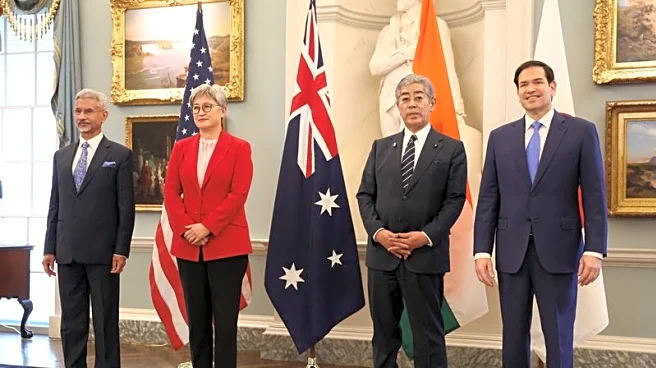What's Happening?
Abercrombie & Fitch has reported a robust second quarter, driven by significant sales and profit gains. The company's net income increased by 11.7 percent to $141.4 million, with net income per diluted share rising to $2.91. Operating income also saw an increase, reaching $207 million compared to $176 million in the previous year. Net sales grew by 7 percent to $1.2 billion, with comparable sales rising by 3 percent. The company has raised its sales gain outlook for 2025 to 5 to 7 percent growth, up from its previous forecast of 3 to 6 percent. The profit outlook for 2025 has also been increased to $10 to $10.50 per diluted share. The Hollister brand, catering to teens, delivered its best second-quarter net sales with a growth of 19 percent. Abercrombie brands, however, saw a decline of 5 percent. CEO Fran Horowitz expressed confidence in continued growth, citing strong consumer engagement and successful brand activations.
Why It's Important?
The strong performance of Abercrombie & Fitch highlights the company's ability to navigate challenging market conditions, including higher tariffs and softer consumer demand. The increase in sales and profit forecasts for 2025 indicates a positive outlook for the company, which is significant for investors and stakeholders. The success of the Hollister brand suggests effective engagement with the teen demographic, a crucial market segment. The company's strategic partnerships, such as the NFL collaboration, are expected to enhance brand visibility and appeal to new consumer demographics, including Gen Z and women. This growth trajectory is vital for sustaining long-term profitability and shareholder returns.
What's Next?
Abercrombie & Fitch plans to continue leveraging its strong foundation to balance current market conditions while investing in long-term global potential. The company aims to capitalize on growth opportunities through sports and lifestyle partnerships, expanding collaborations with the NFL and NBA. Additionally, Abercrombie & Fitch is focusing on product quality and expansion into emerging markets to sustain growth momentum. The company is also prepared to adjust pricing strategies to offset tariff-related cost pressures, ensuring continued demand from its core customer base.
Beyond the Headlines
Abercrombie & Fitch's strategic shift away from China and increased focus on India as a key base highlights the company's adaptability in managing tariff exposure. The flexible supply chain allows the company to shift production to lower tariff markets, which is crucial for maintaining competitive pricing. The emphasis on product quality and expansion into emerging markets underscores the company's commitment to strengthening brand relevance and reaching new consumers. These efforts are expected to drive long-term growth and enhance Abercrombie & Fitch's position in the global retail market.













